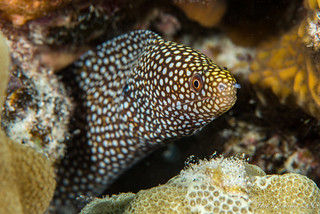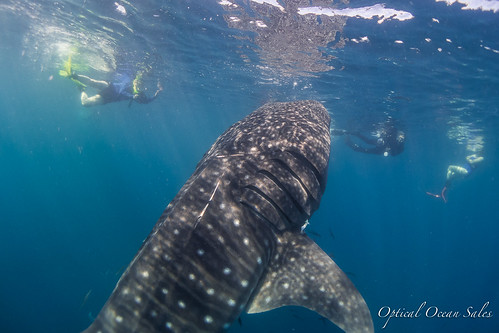 A “newbie” photographers experience with the Sony RX100 II with the Sea and Sea MDX housing.
A “newbie” photographers experience with the Sony RX100 II with the Sea and Sea MDX housing.
By David Todd
I am new to underwater photography.
I
started a few years back with a borrowed ancient point and shoot and
eventually upgraded to a Canon G10 in a Canon polycarbonate housing.
Always the budget minded Scotsman, I piece-mealed my set up; adding a basic tray and arm set on special at a local dive show and eventually upgrading to a
Sea and Sea YS01 strobe and a focus light.
Every
advance has had its share of learning curves and has eventually turned
out to be more than worth the pain in the improvements I have
experienced in my photos.
I recently got a chance to shoot the
Sony RX100II in a
Sea & Sea MDX RX100 I/II housing for a week during a
live-aboard photo expedition in Mexico’s Sea of Cortez.
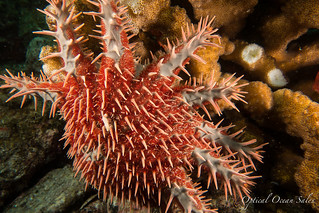
During the trip I got a chance to use the set up in a variety of different conditions and arrays.
It was a big step up for me, first time using a new camera, new housing,
dual strobes, wide angle and macro lenses and had it’s share of
frustrations but in all a huge improvement over my G10 set up.
Big Sensor
This
camera is often lauded for it’s huge 20.2MP CMOS sensor and tiny form
factor. This translates to big camera picture quality in a pocketable
camera. I found the picture quality to be excellent and limited mostly
by my inexperience with the camera.
Wide angle
The majority of the images and footage were taken using an additional
Fix UWL-28 wide angle wet lens that screwed on to the housings 67 mm threads with an adapter.
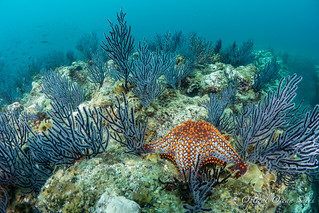
This was ideal for the large animals and wide-open reefscapes we encountered.
I
was able to capture the whole length of 22+ foot whale sharks in the
open water and still get up close to reef creatures and show off the
background in close focus wide-angle shots. We found the corners to be quite acceptable, and the lens is less than half the cost of the Inon wide angle lens system.
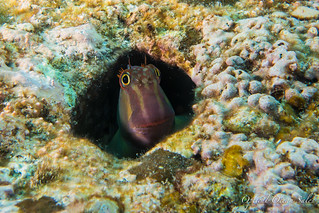 Macro, what macro?
Macro, what macro?
Like
most of the folks on the trip I was geared up for shooting big mantas
and sharks and not unfortunately for the wealth of macro opportunities
that the area held.
Among the whale sharks and sea lions and huge
baitballs lay healthy populations of Barnacle Blennies and Redhead
Gobies which I spent a couple of dives trying to capture to no avail
until I added an
I-DAS + 5 macro diopter to the rig. This helped and I
was able to get identifiable shots of these sub-centimeter creatures, if
not the micro masterpieces I hoped for.
The Housing

The
Sea & Sea MDX RX100I/II housing was a joy to operate. After fighting with sticky
buttons on an inexpensive polycarbonate housing, it was a huge relief to
use a well-machined sturdy aluminum housing. It feels solid and fits
great in the hand with or without gloves. The buttons operated smoothly.
The controls were large, well-marked and intuitive to use. Knobs and dials are much larger than other housings, making this the best choice for cold-water divers.
I found
myself doing things I would never bother attempting on my old housing:
changing settings underwater, reviewing and deleting photos etc. I was
happy to find that the Sea & Sea works so well with the
Sea & Sea YS-D1
and YS-01 strobes. I also appreciated the fact that it can fit either
the 1st or 2nd generation of the RX100, good news for those who might
want to upgrade their camera without incurring the cost of a new
housing.
I did discover a couple of idiosyncrasies, I had my
screen set to turn off after a couple of minutes to save battery power
and had to make to a concerted effort to restart the camera, sometimes
pressing the button repeatedly. Another unique feature of this housing
is it’s light touch in focusing, unlike some, where you press half way
to lock focus and all the way down to shoot, just a light pressure on
the shutter lever brings you to that focus point.
The Takeaway
This
is a very good camera. It has capabilities beyond way my current
knowledge level and is a platform I can see myself growing with as a
photographer.
It has great video capabilities. I only used available
light and the mpeg 4 setting and was quite happy with the results. I’m
looking forward to seeing what using it’s higher res AVCHD settings and
adding video lights will add to the mix.
The Caveat
The
already well-documented weakness of this camera is its lack of native
macro capabilities. For most folks going to clear warm waters to
photograph large animals this won’t be much of an issue. Here in the
Pacific Northwest where we are swaddled in a rich plankton broth at
least ½ of the year, superior macro capabilities are a must have.
Looking forward to trying a more powerful macro lens like the SubSea +5
or +10 diopter.
The Package
